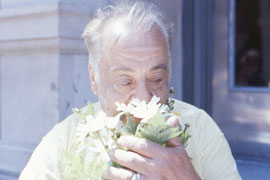I recently opened a Chinese fortune cookie and read: “You will succeed someday.”
Everyone at the table chuckled.
“After all, she’s almost 75 years old. If she hasn’t made it by now…”
or
“Well, that’s a nebulous promise, isn’t it? When? And at what?”
I kind of liked the message myself. After all, how many Chinese fortune cookies today contain more than vague platitudes?
Besides, there are more and more of us who keep trying to succeed at a very advanced age. What about the 105 year old woman who recently threw out the first pitch at a Marlins baseball game? What about Harry Bernstein, the fellow I mentioned in a recent post who wrote and published four really good books after the age of 96? Or composer Elliott Carter who was still composing and conducting until his death at the age of 103?
Before I go on, I guess I should try to define success. For a writer, it seems obvious that it has to mean at least some positive criticism, some significant impact on some one else who has actually read the book(s). In other words, it is made up at least partly by being known. By fame.
At least in its aspect as fame, success today has become more and more desirable. Ironically, it has also become more and more common. I mean Wikipedia alone must contain hundreds of thousands of entries. People kill for it and die for it. Most often, they reveal all for it. To be famous today is to be one of a mob.
And then, when you consider the universe Neil de Grasse Tyson has been talking about, the Cosmos seen only vaguely by science, and almost not at all by the rest of us, well, does it matter at all?
Still, the Chinese fortune cookie promised me success. And that’s kind of cool.








